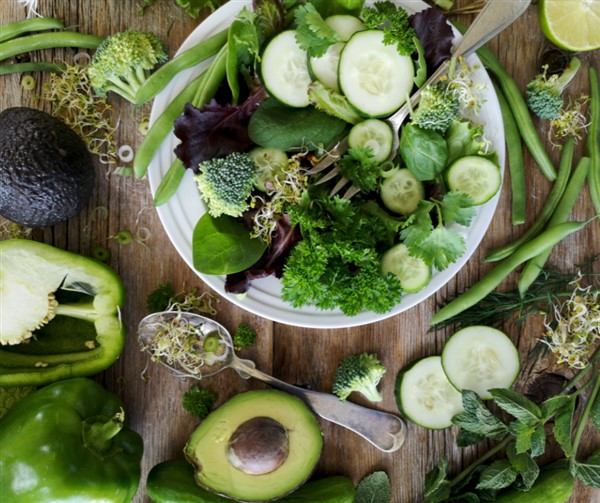Fiber, to put it simply, is the component of vegetables, fruits, beans, grains, nuts, and seeds that resists digestion. So, why would you go out of your way to eat foods that are already on their way out? Precisely for that reason.
Fiber aids in cleansing your digestive system, removing unwanted substances such as excess hormones, cholesterol, body toxins, and waste.
Although fiber is well-known for keeping your digestive system running smoothly, the benefits of fiber don’t end there! It’s also crucial to get enough dietary fiber for the following reasons:
Benefits Of Fiber
- Assisting you in feeling full
- Weight loss is sparked.
- Keeping your blood sugar levels in check
- Keeping cholesterol levels in check
- Boosting your immune system and feeding the beneficial bacteria in your gut
- Assisting in the prevention of heart disease and type 2 diabetes
Soluble v Insoluble Fiber: What’s The Difference?
Fruit and vegetable skins, wheat, wheat bran, rye, and rice all contain insoluble fiber, which has a laxative effect. It doesn’t dissolve well in water; therefore, it contributes to fecal bulk (poop mass). It’s necessary for regular, healthy bowel movements, which should occur once or twice a day.
Soluble fiber absorbs liquid, expands, and is easily digested by microorganisms in the intestine. In the digestive tract, it ferments and releases gases. I know it doesn’t sound inspiring, but it’s crucial for colon health. Soluble fiber gives you a feeling of fullness and is the kind of fiber responsible for lowering LDL “bad” cholesterol.
How Much Fiber Should You Consume?
Adult women should consume 25 grams of fiber per day. In comparison, adult males should consume 38 grams, according to the Academy of Nutrition and Dietetics.
Soluble fiber should account for 10 to 15 grams in both cases. The FDA’s recommended recommendation for fiber, based on a 2,000-calorie diet, suggests 25 grams of fiber. However, the majority of Americans get less than half of the recommended daily fiber intake.
Foods To Boost Your Fiber Intake
- Blackberries: 1 cup raw blackberries has 8 grams of fiber
- Broccoli (cooked): 1/2 cup chopped, cooked broccoli has 3 grams fiber
- Broccoli (raw): 1 cup of chopped broccoli 2 grams fiber
- Cauliflower (cooked): 1/2 cup chopped, cooked cauliflower has 1 gram usable carb, 2 grams fiber
- Cauliflower (raw): 1 cup raw cauliflower has 2 grams of fiber
- Collard greens: 1 cup chopped, cooked collard greens has 6 grams of fiber
- Avocado: 150 grams of avocado has 10 grams of fiber
- Spinach (cooked): One cup of chopped, cooked spinach has 8 grams of fiber.
- Asparagus: 1 cup chopped asparagus has 3 grams of fiber
- Celery: 1 cup chopped celery has 1.5 grams of fiber
- Eggplant (cooked): 1 cup cooked eggplant has 3 grams of fiber
- Mushrooms: 1 cup (155 grams) of mushrooms has 2 grams of fiber
- Radishes: 1 cup raw sliced radishes has 2 grams fiber
- Red raspberries: 1 cup red raspberries has 9 grams of fiber
- Romaine lettuce: 1 cup raw romaine lettuce has 1 gram of fiber
- Bell peppers: 1 cup raw, chopped bell peppers has 3 grams fiber
- Cabbage (cooked): 1/2 cup cooked cabbage has 2 grams of fiber
- Cabbage (raw): 1 cup raw cabbage (89 grams) has 2 grams of fiber
- Nuts and seeds: Nuts and seeds vary, but most are high in fiber.
- Strawberries: 1/2 cup sliced strawberry halves (76 grams) 2 grams fiber
- Zucchini squash and other summer squash: 1 cup cooked summer squash (180 grams) has 2 grams fiber.
Keep In Mind
While fiber is an essential part of a healthy diet, there are certain things to keep in mind while increasing your intake.
Make sure you get plenty of water. If fiber is consumed with insufficient hydration, it can cause constipation.
The easiest method to achieve this is to gradually increase your fiber intake by 5 grams per day. Before increasing your dose again, be sure you’re not experiencing any digestive issues.
Gradually increase the quantity of fiber you consume until you meet your daily goal. Increase your consumption gradually to avoid digestive irritation.

